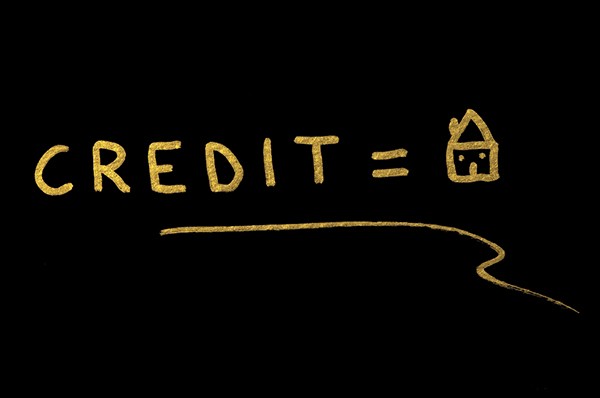Here is a list of resources for home buying and maintenance
The First Step to Owning a Home

Buying a home is usually the single largest purchase a person will make. That’s why it is important to make an informed decision. HUD-approved housing counseling agencies across the country provide no-cost or low-cost housing counseling and homebuyer education programs.
For prospective homeowners, the goal cannot simply be to buy a home. Rather, new homeowners must consider how they will sustain their financial commitment and build equity in their investment. This is precisely why you need to get as much information as possible at the start of your homeownership journey.
A homebuyer education course offered by a HUD-approved counseling agency will help you understand the many facets of homeownership, including the difference between pre-qualifying and pre-approval, who is involved in the home-buying process, what types of loans are available, shopping for a home, finalizing and closing your loan and maintaining your home once you’re officially a homeowner.
In a pre-purchase housing counseling appointment, a counselor reviews your credit and your personal finances to assess how ready you are for homeownership. The housing counselor conducts a debt analysis and reviews what funds you have available for a down payment and closing costs. In short, a housing counselor can help families come up with a plan to achieve their dream of homeownership.
Research shows a strong correlation between housing counseling and mortgage performance. Delinquency rates for borrowers who have received counseling are 29% lower for first-time homebuyers, and 15% lower overall. Individuals who participate in housing counseling get individualized, objective advice to help them reach their housing and financial goals.
When you sign a contract for hundreds of thousands of dollars that spans 30 years, you want to be certain that you are making the right decision for your family. Homebuyer counseling and education will broaden your understanding of the home-buying process and increase your long-term success.
To find a list of HUD-approved housing counseling agencies near you, visit http://www.hud.gov/offices/hsg/sfh/hcc/hcs.cfm
You Can Rebuild Your Credit and Buy a Home

All is not lost for people with poor credit. Please don’t give up on your goal of homeownership, if that’s what you really want. Some people think poor credit is a death sentence, something you will suffer with for the rest of your life. Nothing could be further from the truth, however. You can take practical steps that will positively impact your credit scores. If you do nothing, though, your credit situation will remain the same.
You might be surprised to learn that it typically takes people two to three years to rebuild their credit. If that seems like too long, consider that most cell phone contracts last for two years. Think of how fast your contract comes up for renewal—two years go by in a flash. While your situation may be unique, but there are certain things that all people can to do improve their credit.
Thirty-five percent of your credit score is based on you paying your bills on time, so start here. If you don’t already, make it a habit to pay all of your bills on time, with full monthly payments on or before your due dates. If you are late with payments, your credit scores will continue to suffer. If you let accounts go into collections, this will also negatively impact your credit scores. If you currently have accounts in collections, make arrangements to repay these bills and to bring your accounts current.
Thirty percent of your credit score is based on your credit utilization, or the amount of credit that you are currently using, compared to what you have available to you. If you’re using a majority of your available credit, pay it down. Avoid reaching your credit limit on your credit cards. In fact, it’s a good rule of thumb to stay under your credit limit by at least 30%. If you have zero-balance credit cards, keep them open, since closing these accounts can affect your credit utilization.
Fifteen percent of your credit score is based on your credit history. The longer you use credit and pay your bills on time, the better.
Twenty percent of your credit score is based on how many lines of credit you have opened in the last 12 months and the types of credit extended to you. Too many new lines of credit, or too many open lines of credit, can lower your credit scores.
If you need additional guidance to help you rebuild your credit, I encourage you to contact a HUD- approved housing counseling agency. A housing counselor can review your situation and provide you with personalized steps to rebuild your credit. With a little bit of know-how, patience, and a commitment to change, you can build your credit and turn your dream of homeownership into a reality.
Furnishing a New Home

Buying a new home is an exciting adventure. So exciting, in fact, that it’s easy to get swept away with your future plans for making it your own. Instead of rushing out to buy all-new appliances and furniture, however, I encourage you to take a slower, more thoughtful approach to furnishing your new house.
Homeownership will come with new and different kinds of expenses, and it can take some time for you to become accustomed to these changes in your budget. The last thing you want to do is to take on more debt as soon as you move into your home. New drapes are lovely, but a high-interest credit payment is not.
The slow approach to decorating starts with you considering what will bring you joy. How do you envision you spending your time in your new home? What purchases can you make that will help you achieve the kind of life you desire? Do you envision gathering people around your table, or maybe you want to create a comfortable media space for your family. Will having a well-equipped mudroom make it easier to deal with muddy feet and paws? Or maybe you’re dreaming about a bistro set to enjoy your morning coffee on the front porch.
With this vision in mind, make a list of the items you would like to have for each room in your home. Think about what you want or need for outside living, too, including things such as a lawn mower and patio furniture. Next, prioritize your list. What do you want or need to buy first?
With your list in hand, you can start sourcing your wants and needs, but you don’t necessarily have to start at a retail store to do this. You might consider getting in touch with your family members first to see if they have unwanted items sitting around. You can solve their storage problem while getting something you need in the process.
You can also check various websites, garage sales, and second hand stores for the things you need. With a clear vision, and a little persistence, you can net some fabulous items for your home, including like-new appliances, rugs and furniture at a fraction of the price of new items.
Regardless of where you choose to shop, I suggest you set a budget for each item you wish to buy. I also suggest that you institute a short waiting period if you plan to spend more than $200 on any given item. If you feel rushed into buying something, you could end up with a case of buyer’s remorse. If you buy something on impulse, you may find that it isn’t something you want or need. It’s better to wait for precisely what you want than to rush out and buy something just for the sake of furnishing your home.
Review your prioritized list often and determine which things you need to buy next. After living in your home for a while, you’ll have a better sense of how you use each room, and you may find that your priorities change. Taking your time and filling your home with things you love will help to keep your budget intact and let you create a space that is uniquely your own.
